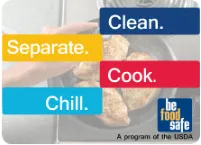One of the factors that influence healthy eating is what is selected for cooking and or for the dinner table. Below, we share tips to help you in determining how to select and buy nutritious and safe food suitable for your pocket.
- Before shopping, list all the ingredients you need including the quantity and the cost. Knowing the size of household and what is already in store will help to accurately estimate the quantity needed and the associated cost. Knowing the size of household and what is already in store is also important because it helps to avoid food waste. Food wasted is money wasted. Also, aim to buy in bulk to save on transportation cost. Some food products may be cheaper when bought in bulk.
- Before heading out with the shopping list, determine the shopping centre or markets to shop from. Take into consideration the location of the market, the food prices at the market and discount given. These factors can help you to make some savings. Additionally, consider factors such as the safety of the food, how clean and safe the market environment is. Food that contains unsafe substances or substances that are not in their acceptable amount for human health can have a negative impact on your health. Food sold in unclean environment contribute to foodborne illness. Eating unsafe food or food from unclean environment may contribute to health bills. Also, consider a shopping centre or market that will give you the choice to select food based on their labels. Food labels give you information on the nutrient content of a food product, their safe use information etc.
- At the shopping centre or market, start from the fruits and vegetables section. This will help you to stock your basket with more healthy options and the fruits and vegetables do not become an afterthought. The fruits and vegetables may also create less space in the shopping basket, stopping you from reaching out to foods high in sugar, fat and salt or foods not on your list.
- At the shopping centre or market, read the food labels, where available. Food labels give you information on the nutrient content of a food product, their safe use information etc. In reading the food label, find answers to
a. The fat content – a total fat content of more than 17.5g per 100g is high and of 3g or less per 100g is low. In addition to the total fat content, check for the fat saturates content – high is more than 5g saturates per 100g and Low is 1.5g saturates or less per 100g. Go for lower total fat content and fat saturates content.
b. The sugar content – a total sugar content of more than 22.5g per 100g is high and of 5g or less per 100g is low. Go for lower total sugar content. You may see a number for total ‘Carbohydrates’, not for ‘Carbohydrates (of which sugars)’. This means the number also includes the carbohydrate from starchy foods.
c. The salt content – a total salt (sodium) content of more than1.5g per 100g is high and of 0.3g per 100g is low. Go for lower total salt content.
d. Added nutrients – vitamins and minerals, fibre. Also check the ingredient list to identify any ingredient you may be allergic to etc.
e. The amount of energy in the food captured as Kcal or KJ. The higher the Kcal or KJ, the more you are likely to take in more calories than your body needs, or you use.
f. Use by/Expiry, Best Before – this is very important to prevent food poisoning and to save you from wasting food, which costs money. Foods with use by dates/expiry cannot be used at the end of that date. If the use by date/expiry is tomorrow, you can only use the food till tomorrow but not after tomorrow even if the food tastes, smells and looks alright. You do not want to buy food meant for next week with a use by date, tomorrow. Best before date is mostly associated with the quality of the food and not the safety of the food. It means, the food may still be used but you do not want to use a food which has its best before date long passed. Note that in using best before, a manufacturer is indicating that they cannot guarantee the food product’s quality and safety. The responsibility therefore lies on you.
g. Nutrition Claims – some food labels may have claims such as fortified with iron, low fat etc. Do check if this is indeed the case. - Buy food not brand – we are constantly bombarded with food adverts, everywhere. At the shopping centre or market, we may subconsciously reach out for food products based on an advert we watched, saw or listened to. However, always be guided by the food labels to help you choose a more nutritious option. In addition, another brand may offer an alternative at a cheaper price.
- Stick to the list. Do not be tempted to add 😊.
- At home, store the food safely and in a clean environment.
Join the Become A Healthier You community today and find support to become healthier.
Written and reviewed by: Irene Danquah, ANutr
Last page review: 23/12/2021
Next page review: 31/12/2024


